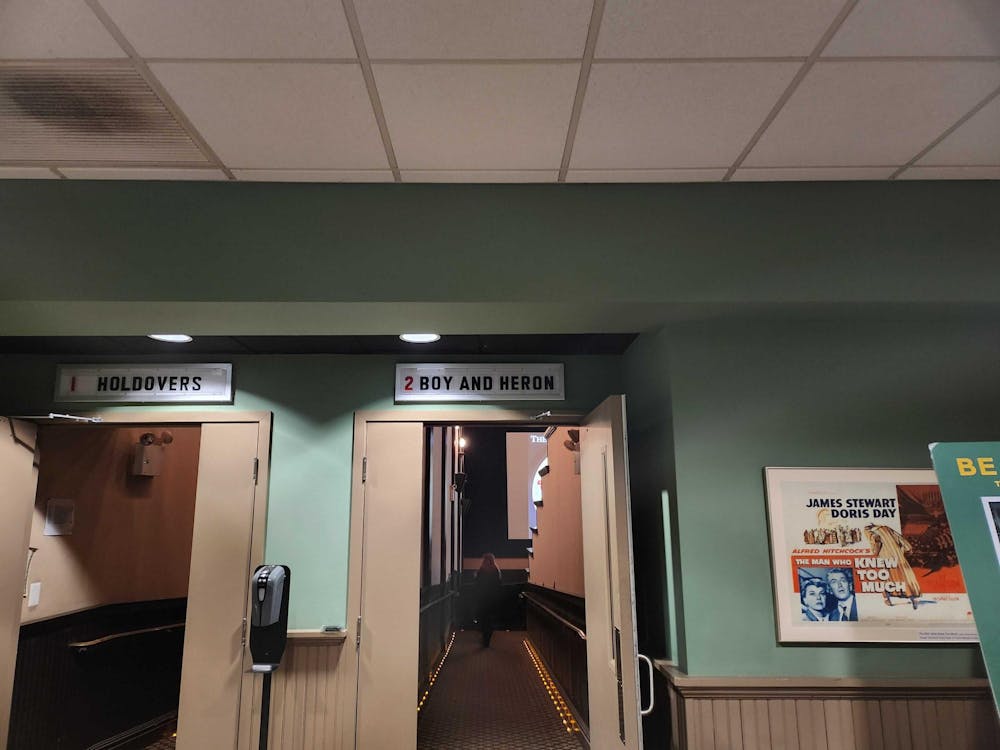“The Boy and The Heron” wasn’t supposed to be released. Hayao Miyazaki had already announced that his last film would be “The Wind Rises,” a fictionalized biopic on the complicated life of aeronautical engineer Jiro Horikoshi, whose plane designs were used by Japan in World War II. That film serves both as a testament to Miyazaki’s prowess as a filmmaker and a semi-autobiographical look at an artist's reconciliation with the inability to control the impact of his own work.
But Miyazaki, despite his best efforts, couldn’t stay away. Originally titled “How Do You Live?” in its home market, this most recent addition to Studio Ghibli’s empire of expertly crafted stories is Miyazaki’s most autobiographical yet. In just two hours, “The Boy and The Heron” ambitiously tells a story and crafts a world that goes beyond expectations, and occasionally comprehension, to deliver a personal story of love, life, and creation that will leave audiences in awe.
This special early screening was courtesy of USG's Movie Committee and GKIDS, the U.S. distributor for the film. The pre-screening, which ran out of spots in less than a minute of registration opening, was the third opportunity for Princeton students to see a film before its wider release, following pre-screenings of “Saltburn” and “All Dirt Roads Taste of Salt“ in prior weeks.
From the first frames of the film, Miyazaki’s philosophies about filmmaking shine through. Though the audience is immediately thrown into a deeply emotional and intense scene, Miyazaki takes time to showcase the main character, a boy named Mahito Maki, putting on his clothes and shoes — subtle actions that provide a touch of humanity to the characters drawn on screen.
Simultaneously, the animators at Studio Ghibli branch out from their standard animation style, creating a scene that feels like a foggy memory or dream through use of flowing, almost liquid figures and locations. Ghibli remains ambitious in the animation department throughout the film, with beautiful, dreamlike scenes and characters that stand out. I especially liked the elderly women characters, whose caricaturistic appearance expands on characters that otherwise don't have much time to leave individual impressions.
Ghibli’s return to its more traditional 2D animation style is a stark and welcome departure from their last film, “Earwig and The Witch,” which was criticized for its 3D animation style that unsuccessfully attempted to recreate Ghibli’s signature aesthetic. The film was also criticized for its lackluster story and widely considered a creative misstep for the studio, placing its future in peril.
Given this context, one can imagine how terrible it must be to be Hayao Miyazaki’s son, Goro Miyazaki, the director behind “Earwig and The Witch.” After three attempts at succeeding his father at the helm of Ghibli, to see his father return to filmmaking in such a successful way must be crushing.
Even more crushing for Goro is the film’s theme, which centers on the joy of worldbuilding and the difficulty of leaving it all behind. Elements of Hayao Miyazaki’s personal life bleed into the film. A mysterious creator character serves as a Hayao Miyazaki stand-in, whose conflicts in convincing Mahito to succeed him mirror real world conflicts between father and son.
“The Boy and the Heron” is split into two distinct parts: one centered in the real world and another of pure fantasy. In the real world, Mahito is dealing with the trauma of his mother’s death and his forced move from Tokyo to the Japanese countryside. In the fantasy world, Mahito is able to work through his trauma in a nonsensical world full of baby-killing pelicans and oblivious, human-eating parakeets.
Despite its visual prowess, the plot can feel disjointed at times. This disconnect can mostly be attributed to a lack of explicit worldbuilding, asking the audience to fill gaps left by a lack of dialogue with assumptions and observations. The film’s silence, however, is refreshing in an industry packed to the brim with action films that don’t let the audience rest from beginning to end. The film also doesn’t overstay its welcome. While the epilogue leaves the audience feeling abruptly cut off from the world in a way that disappoints, it does not detract from the film as a whole.
Even with my minor quibbles with the film, “The Boy and The Heron” is an undeserved treat. Any opportunity to see a new Studio Ghibli film in theaters is a delight, and this film delivers a tasty, deeply emotional and wondrous experience. Though this may be Miyazaki’s last film, it’s not out of the realm of possibility for the 82-year-old filmmaker to come out of retirement for the umpteenth time. Until that potential story is unwound, “The Boy and The Heron” is a masterful goodbye to a career well-lived.
Vitus Larrieu is an associate Podcast editor for the ‘Prince.’ He can be reached at vl7131@princeton.edu.









